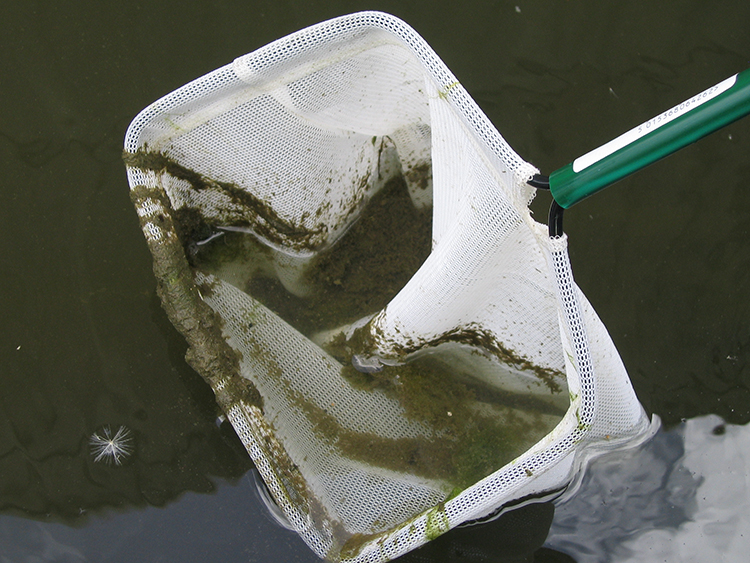Are you a pond owner dealing with the issue of silt buildup in your pond? Silt, which is a combination of clay, sand, and organic matter, can accumulate over time and negatively impact the health of your pond ecosystem. Excessive silt can lead to poor water quality, reduced oxygen levels, and the buildup of harmful nutrients. Therefore, it is essential to address silt accumulation to maintain a healthy and vibrant pond environment. In this article, we will discuss some effective methods to remove silt from a pond.
1. Dredging
Dredging is a common method used to remove silt from ponds. It involves the use of heavy machinery to scoop out the accumulated silt from the bottom of the pond. Dredging can be effective in removing large volumes of silt quickly, but it can be a costly and labor-intensive process. It is essential to consult with a professional dredging company to assess the feasibility and environmental impact of dredging in your pond.
Credit: americansportfish.com
2. Installing a Silt Barrier
Installing a silt barrier is a proactive approach to prevent silt from entering your pond in the first place. Silt barriers are physical barriers placed at the inlet of the pond to trap sediment and prevent it from settling at the bottom. These barriers can help reduce the amount of silt entering the pond and minimize the need for frequent silt removal.
3. Vegetative Buffer Strips
Vegetative buffer strips are planted areas around the pond that help filter out sediment before it reaches the water. By planting grasses, shrubs, and trees along the shoreline, you can create a natural barrier that traps silt and other pollutants, preventing them from entering the pond. Vegetative buffer strips not only help reduce silt buildup but also enhance the aesthetic appeal of the pond.
4. Mechanical Aeration
Mechanical aeration is another effective method to prevent silt accumulation in ponds. Aeration systems help increase oxygen levels in the water, which promotes the growth of beneficial bacteria that break down organic matter and reduce silt buildup. By installing aeration equipment such as diffusers or aerators, you can improve water quality and reduce silt deposition in your pond.
5. Beneficial Bacteria
Introducing beneficial bacteria into the pond can help break down organic matter and silt, reducing their accumulation over time. These bacteria feed on organic debris and convert it into harmless byproducts, helping to maintain a balanced ecosystem in the pond. Beneficial bacteria products are available in liquid or granular form and can be applied regularly to promote a healthy pond environment.
6. Mechanical Silt Removal
Mechanical silt removal involves using equipment such as pond vacuums or dredging pumps to physically remove silt from the pond. These tools can be effective in targeting specific areas of silt accumulation and restoring water clarity. Mechanical silt removal should be done carefully to avoid disrupting the pond ecosystem and causing damage to aquatic plants and wildlife.
7. Regular Maintenance
Regular maintenance is key to preventing silt buildup in ponds. By implementing a routine maintenance schedule that includes activities such as removing debris, trimming aquatic plants, and monitoring water quality, you can prevent silt from accumulating and maintain a healthy pond environment. Regular maintenance also allows you to identify silt accumulation early and take proactive measures to address it before it becomes a significant issue.
8. Hydro-Raking
Hydro-raking is a method that involves using a specialized machine to remove silt and debris from the bottom of the pond. The machine agitates the sediment, allowing it to be suctioned out and collected. Hydro-raking can be an effective method for targeting localized silt accumulation and improving water clarity in the pond.

Credit: pondaquariumproblemsolver.co.uk
9. Sediment Dredging Bags
Sediment dredging bags are a cost-effective solution for removing silt from ponds. These bags are filled with silt and sediment, allowing water to drain out while trapping the solid particles. Sediment dredging bags can be placed in the pond to collect silt over time, providing a convenient way to remove sediment without the need for heavy machinery.
10. Soil Erosion Control
Preventing soil erosion around the pond is essential for reducing silt accumulation. Erosion control measures such as planting vegetation, installing retaining walls, and creating swales can help stabilize the soil and prevent sediment from being washed into the pond during heavy rainfall. By addressing soil erosion, you can minimize the influx of silt into the pond and maintain water quality.
Conclusion
Removing silt from a pond is a crucial aspect of pond maintenance that requires proactive measures to prevent silt accumulation and preserve the health of the pond ecosystem. By implementing a combination of methods such as dredging, installing silt barriers, using beneficial bacteria, and practicing regular maintenance, you can effectively manage silt buildup in your pond and create a clean and sustainable aquatic environment for plants and wildlife. Remember to consult with pond management professionals to determine the most suitable silt removal methods for your specific pond conditions.




